Growing your vegetables can be rewarding, particularly with the variety of methods available. In what way would you dare to start? The best place to do this is at the dinner table, with a calendar, a pencil, and our vegetable growing calendar and guide for Oklahoma. If you carefully organize your growing space and growth timetable, you can harvest a wide variety of veggies at home in Oklahoma.
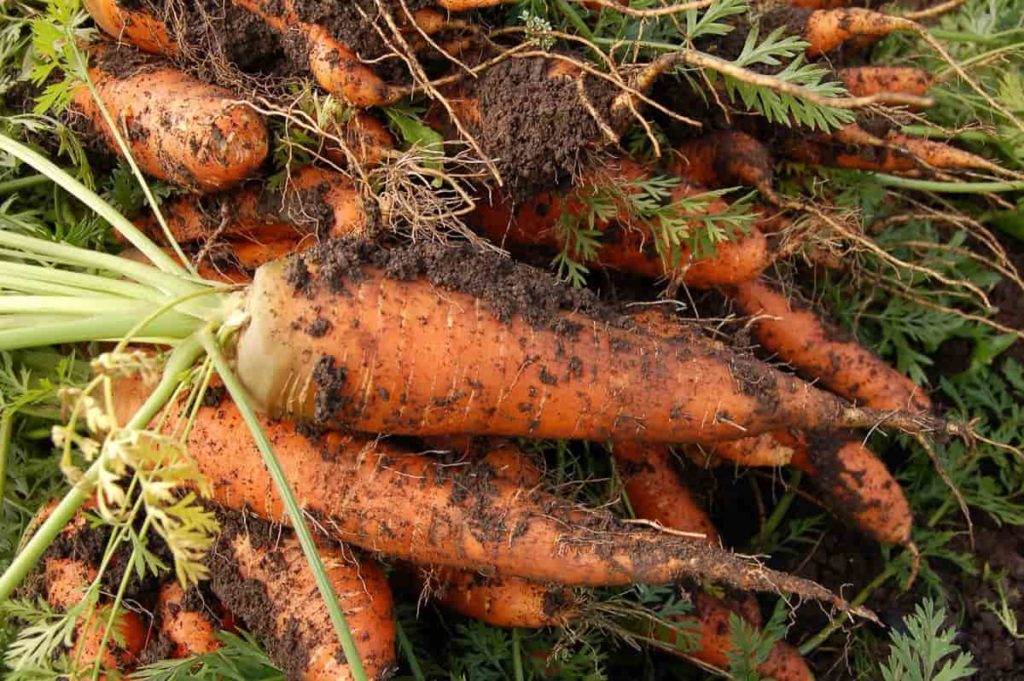
Below we learn the Oklahoma vegetable planting calendar, when to start planting in Oklahoma, what to plant in different seasons in Oklahoma, and month by month chart for growing vegetables in different seasons in Oklahoma home gardens.
Oklahoma vegetable planting calendar (OK)
What can you plant in April in Oklahoma?
Trees, bushes, and ground coverings can all be planted successfully in April. After the threat of frost has passed, you can plant your annual bedding plants, perennials, summer-blooming bulbs (canna, dahlias, gladiolus), and annual flower seeds. Around the middle of April, this occurs throughout the state of Oklahoma. Plant warm-season annuals like periwinkle and caladiums in May, when soil temperatures have reached the low 60s. Garden and flower beds need to have their soil prepared.
Apply fertilizer to annual bedding plants just before planting. Plant tomatoes and peppers and other fragile vegetables and herbs after April 15th. Do not plant cucurbits or okra until the soil has warmed up a little more. Grass species that grow well in the shade should be seeded in new lawn areas or overseeded into existing lawns. As soon as spring flowering plants have done blooming, prune them. Please wait as long as possible before removing the leaves of spring-blooming bulbs (daffodils, tulips, etc.).
To avoid disrupting pollination, avoid spraying pesticides on fruit trees when they are in flower. The powdery mildew, leaf spot, and blight can be managed with early identification and routine treatment. By the end of the month, you may notice an increase in pests in your garden and landscape, such as lace bugs, bagworms, cutworms, aphids, spider mites, flea beetles, and so on. Newly planted trees and bushes can thrive or die depending on how well they are watered.
When should you plant tomatoes in Oklahoma?
When the soil temperature rises over 60 degrees Fahrenheit, tomato plants can be planted in the garden. If you live in southern Oklahoma, you can expect these circumstances around April 5; if you live in northwest Oklahoma, you can expect them around April 25. The growth of tomatoes is stunted at temperatures below 50 degrees Fahrenheit. Before planting, remove any containers or bands from around the transplant’s root ball.
In case you missed it: Georgia Vegetable Planting Calendar (GA): Month Wise Chart, Zone 6, Zone 7, Zone 8, and Zone 9
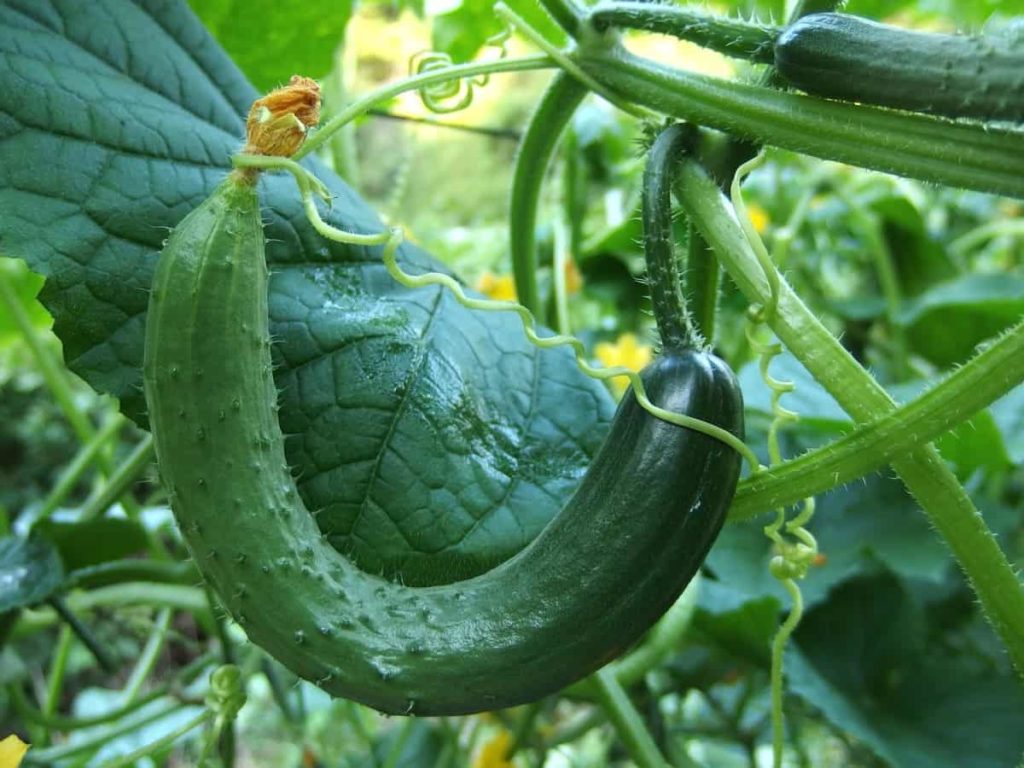
The use of peat pots is permitted. Plants should be planted a little deeper than they were originally intended to grow so that their bottom leaves are near the soil. When only tall plants are available, bury the rest of the plant save for the top six inches or so. By doing so, roots will be able to grow along the concealed section of the stem. Ensure the peat pot is completely covered with soil since any exposed peat acts as a wick, quickly drying up the root ball.
Make transplant holes 3-4 inches deep and 2-4 feet apart. Ideally, anchored or caged plants would have a row spacing of three feet. Plants that don’t need support need at least three to five feet of space between rows. Plant tomatoes at night or on a gloomy day to minimize drying and drooping. Let the water soak into the soil in the transplant holes before planting. Do not squish the plant’s roots by packing the dirt too tightly around it.
When should you plant green beans in Oklahoma?
Growing green beans in Oklahoma couldn’t be simpler. When the ground has warmed up, you can simply plant them. Beautiful white or lilac bean blooms will appear 50-60 days later, followed by healthy bean pods. My preference comes from growing bush beans rather than pole beans. Like deciding between indeterminate and determinate tomato plants, it’s all about taste. Beans should be picked when they are at a medium size and cooked the same day or the next day. The flavor is so crisp; you’ll be amazed.
Can your garden year-round in Oklahoma?
It’s possible to grow a wide range of plant species in Oklahoma. Vegetables can be grown all year in zone 7.
What can I plant in February in Oklahoma?
If you want to plant radishes, carrots, lettuce, peas, spinach, kale, potatoes, or onions in your Oklahoma garden in February, you can do so as long as you do it before the weather becomes too hot. Many visitors to Oklahoma are surprised to learn that the heat is more of a problem than the cold. We can grow radishes, peas, and carrots in February, along with our onions and potatoes. You must start seeds inside if you intend to grow your plants from seed.
Cauliflower, Brussel sprouts, spinach, kale, broccoli, cilantro, and cabbage are all plants that should be started inside as seedlings for a winter garden. It is possible to plant them in the ground towards the end of winter, around the first of March, for a spring harvest. Tomatoes, eggplant, artichokes, peppers, herbs, and tomatillos are just a few of the plants you can start inside to plant in your garden during spring and summer. You can sow seeds into the ground outdoors directly for a few more spring and summer vegetable crops in the spring.
When should you plant potatoes in Oklahoma?
The use of uncertified seeds in potato cultivation would be too risky. For optimal crop growth and protection from the stifling heat of summer, planting should begin in central Oklahoma in early March and in northern Oklahoma in mid-March. Planters come in various designs; some can even include fertilizer and systemic pesticide application in a single pass over the planting area.
The optimal planting depth for seeds is around four inches below the soil’s surface. During early cultivation, the soil is ridged over the row by tossing soil to the plants, resulting in a soil depth of approximately 6 inches over the seed piece, which is necessary for proper tuber production. When grown under optimal conditions, potatoes expand their root systems deeper and wider. Tuber growth and smoothness in loose, friable soil are both enhanced.
In case you missed it: How to Start Gardening at Home for Beginners: A Full Planting Guide for Flowers, Fruits, Herbs, and Vegetables

Cultivation can be required for weed management, soil hilling, water penetration, and aeration promotion. Never grow more than you need. Avoid engaging in deep cultivation if at all possible. Costing more money, adding to soil compaction, and decreasing yield, repeated plantings are unnecessary. When plants are in full bloom, that’s when you should wrap up cultivation.
When should I start a garden in Oklahoma?
It’s best to sow cool-season crops in the late summer (between the end of July and the middle of September), as the weather improves and becomes more conducive to their growth. With proper care, those plants can endure the cold of winter and continue to provide fruit even when spring temperatures dip.
Alternately, you can grow cool-weather foods in late winter/early spring and consume them until the summer heat sets in. When monthly low temperatures rise above freezing (mid-April), warm-season crops can be sown. There are plant species that fare better when started from seed. Planting a seedling has shown to be beneficial for other types of crops.
What gardening zone is Oklahoma?
The northern half of the state has a humid continental climate, the middle and eastern sections of the state have a humid subtropical climate, and the western part has a semi-arid climate. The state’s closeness to three distinct types of weather-inducing air masses—dry, cold air from Canada, hot, dry air from the Southwestern United States and Mexico, and moist, warm air from the Gulf of Mexico—makes severe weather a regular occurrence throughout the state.
Thunderstorms, tornadoes, and hail are seldom seen anywhere in the United States. They can be traced back to these three locations and the radically diverse air currents they experience. More than sixty tornadoes occur in the state each year. The state has the lowest rainfall throughout the winter, with the wettest month being May. Winters average about 39 degrees Fahrenheit, while summers average 79 degrees.
In case you missed it: South Carolina Vegetable Planting Calendar (SC): Month Wise Chart, Zone 7, Zone 8, and Zone 9
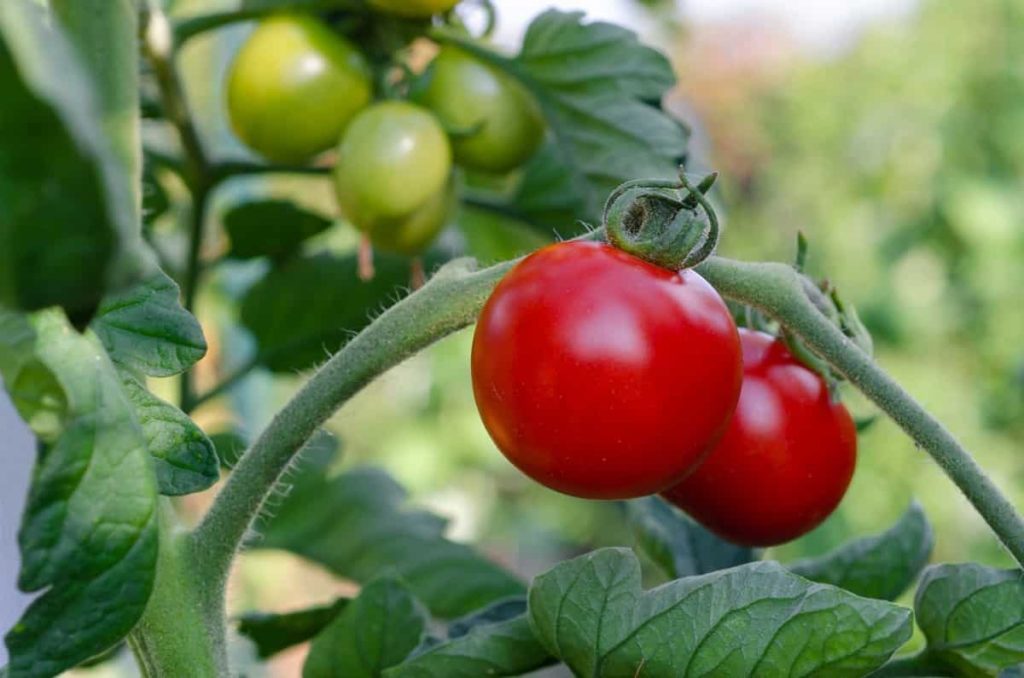
Oklahoma has a wide variety of growth zones, from 6a to 8a. Gardeners can use growing zones, often called planting zones, to learn what plants and flowers do best in a certain area. Find out what planting zone you are in for plants in Oklahoma in a flash by utilizing our online tool. A plant’s hardiness zone tells us which ones will fare best over the winter. They advise on what and when to plant.
When planning your garden in Oklahoma, consider the average first and final frost dates in your zone. If you want your garden to thrive, remember only to choose hardy plants in your planting zone or lower, as is the case in Oklahoma. Plants categorized as hardy only in zones 1 through 6 should be used in zone 6a gardens. This ensures that the plants can endure the cold winters in the zone.
Flowers and plants of numerous kinds thrive in Oklahoma’s varied climate. Following the hardiness zone recommendations will give you the greatest chance of growing healthy plants in your area. Cultivating rudbeckias, Shasta daisies, peonies, daylilies, and garden phlox is simple. The state is ideal for cultivating chard, snow peas, herbs, kale, lettuce, and summer squash.
How late can you plant potatoes in Oklahoma?
Potatoes thrive best in the chilly temperatures of the winter. You can plant them earlier in the year than more delicate garden plants since they are not as affected by the cold. Midway through the months of February and March is optimal for planting potatoes. Planting in the southern part of Oklahoma should be done early in this range.
Don’t compress the soil; potatoes like an evenly wet environment, drain quickly, and have plenty of air circulation. The optimal range for pH is 5.0–5.5. Although potatoes thrive in bright sunlight, they produce less when the temperature rises too high, or there isn’t enough rain.
What to plant now in Oklahoma?
Fall gardening in Oklahoma
Oklahoma’s greatest garden veggies are grown and harvested in the autumn when warm, bright days are followed by chilly, damp nights. More of the plant’s produced food is converted into a nutritious vegetable product since plant soil metabolism is reduced in these weather circumstances. What’s already growing in the garden, personal preferences, available land, irrigation water, and the timing of planting and harvest all play a role in determining which crops get prioritized.
Tomatoes, okra, peppers, sweet potatoes, cowpeas, and New Zealand spinach were all planted in the spring garden, and some of them can survive being harvested later. Proper maintenance of these plants in late autumn can result in very high harvests. You can trim your tomato, okra, or New Zealand spinach plants to make them more manageable if they’ve grown too big for the area. Grass and broadleaf weeds should be the primary targets of any cultivation performed very shallowly. They need mulch, water, and fertilizer too.
The seeds saved from the spring garden may be utilized for the autumn garden, provided they are kept in a cold, dry place or the fridge or freezer. The viability of seeds properly frozen should be preserved for many years. Extra seeds should be put back in the freezer right after planting. It’s ideal for providing extra watering early on so that growth can get entrenched. Additional irrigation is recommended for most vegetable crops.
Garden centers and county Extension centers could have literature on drip irrigation. Through the use of this approach, irrigation can be done more effectively. Water the rows or furrows and let the rain take care of the rest. Planting seeds requires an overnight soak (except for beans and peas). At a time in plant development when rapid soil drying is essential, this will speed up the germination and emergence of seedlings. Cover the sown rows to keep the soil from drying out and the temperature.
In case you missed it: Top 29 Vertical Vegetable Garden Ideas for Beginners: Check How this Guide Helps Home Gardeners
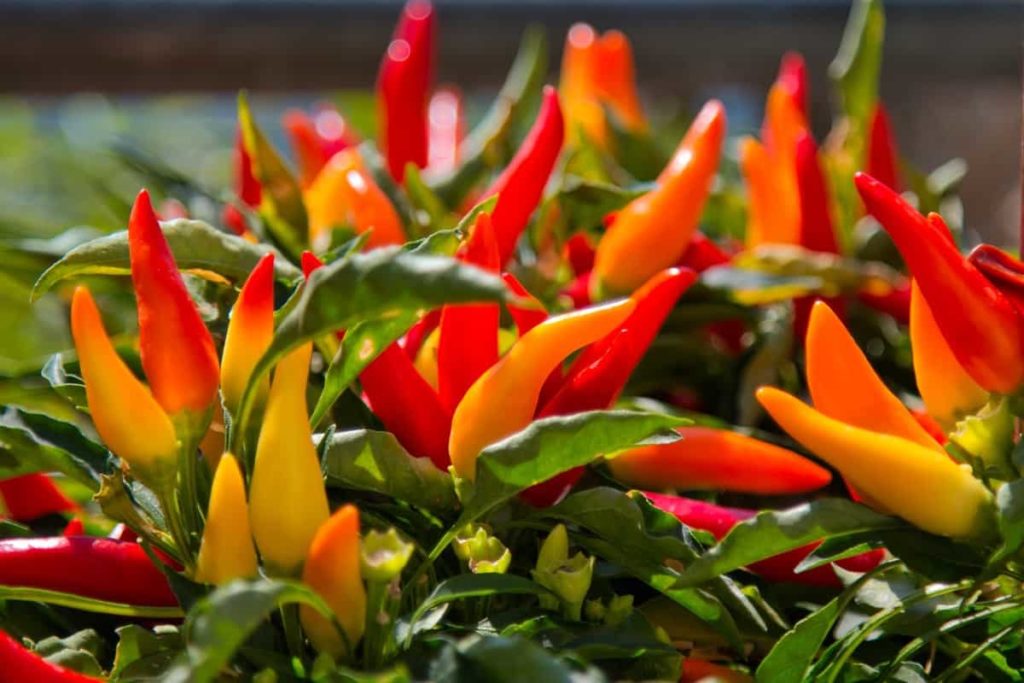
Spring gardening in Oklahoma
Temporary plants and annual flowers can be sown in late April or May. Tender crops like okra, pepper, cucumber, beans, pumpkin, eggplant, summer squash, and even tomatoes can be planted around April 10 (or a little later in the north) since they can endure residual chilly weather. Spring annuals like petunias, impatiens, and snapdragons may also be planted.
Cantaloupe, sweet potatoes, southern peas, winter squash, and watermelon are some of the more delicate veggies that should not be planted until at least May 1 and sometimes not until mid-June, based on how far north you live. Zinnias, petunias, and nasturtiums should be planted now. Trees that provide fruit, such as apples and pears, can be planted in spring or autumn.
Summer gardening in Oklahoma
In Oklahoma, like in other states, the success of your home garden depends largely on the location you choose and the work you put into preparing it. A location with deep, well-drained, rich soil and the full or almost complete sun are ideal. Additionally, the location should be near a water supply and, if feasible, free of overhanging vegetation that might block sunlight and prevent the garden from receiving essential moisture and nutrients.
Numerous vegetables thrive in partially shaded places, such as under trees, where they get just about an hour and a half of sunshine daily. Vegetables such as beans, beets, cauliflower, chard, broccoli, cabbage, kohlrabi, radishes, rhubarb, spinach, leaf lettuce, peas, potatoes, and turnips are all in this category. Depending on the light that reaches them, plants will produce smaller and less uniform harvestable portions.
Vegetables that bear fruit in the summer can do better if shaded in the afternoon. If the area has poor drainage, a thin topsoil layer, or excessive amounts of sand or clay, growing in raised beds or containers could be a better alternative than planting directly in the ground. Raise bed gardens to need high-quality garden soil, whereas traditional gardens can utilize other growth mediums.
Many vegetables do well in the hot summer months in Oklahoma, including beans, beets, broccoli, chard, kohlrabi, leaf lettuce, cabbage, cauliflower, peas, rhubarb, spinach, potatoes, radishes, and turnips. Reduced size and altered form of harvestable plant portions result from less light reaching the plants. It’s not uncommon for a garden in Oklahoma to need two inches of water every week when the weather is particularly hot.
Still, this amount diminishes as the weather cools down. Instead of spraying your garden every day, it is better to water it once a week. According to the USDA, Oklahoma is in plant hardiness zone 6-8. Know when to sow seeds and transplants for a successful vegetable garden. Knowing when the first and last frosts will be in your location can help you plan your veggie seeds at the right times.
Winter gardening in Oklahoma
It’s nearly time to start planting, so start thinking about where you’ll receive your supplies. Which of these months—May or summer—comes to mind when you think about planting? Although many plants are planted in the spring, winter is still a great time to get some seeds in the ground. Since our spring and autumn are so brief, planting cool-season crops in Oklahoma requires an early start.
Assuming you have given your plants enough time to grow established and mature by April, you should get a healthy Spring crop before the summer heat kills everything. Winter is a good time to cultivate onions. You can start planting seeds or plants after the first week of February. So long as you do this, your onions will have time to establish themselves before the weather becomes too heated. Begin your onion crop using seeds or sets. You can also grow white or Irish potatoes in the winter.
In temperatures exceeding 80 degrees Fahrenheit, potato growth is stunted. If your soil heats up to that point, your potatoes will rot. To start as soon as possible is ideal. The rule is to sow on St. Patrick’s Day and harvest by July Fourth. Winter is the best time to sow cole crops. Broccoli, kohlrabi, cauliflower, kale, and cabbage are all examples of cole crops. Plants of cole crops should be sown between the 10th of February and the 10th of March.
To ensure you have plants come spring, sow seeds inside in December and keep them warm and moist until they are ready to be planted outside. Winter is an excellent time to sow lettuce, another direct seed crop. Since the seeds are so tiny, the same care must be used while dispersing them, just as it would with carrots. One of the best winter crops is peas. Seeds of peas are sown in the ground.
Something to climb will be useful as well. Some of the most entertaining crops to grow are radishes. The seeds are manageable in size for young children and sprout quite rapidly. You should expect radish seedlings in your garden in just a few days. In only three to four weeks, you can harvest delicious crops.
In case you missed it: Top 31 Vegetable Garden Ideas at Home: Check How this Guide Helps Beginners
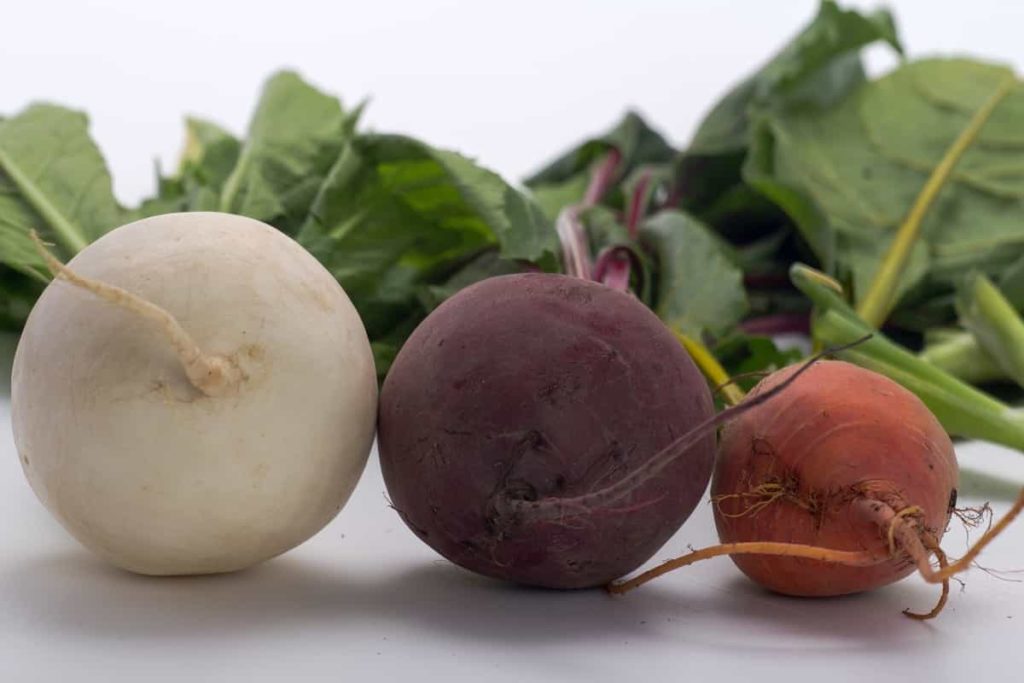
Oklahoma vegetable planting calendar
| Vegetables | Zone 6 | Zone 7 | Zone 8 |
| Beans | May to mid-Oct | Apr to mid-Oct | Mid Mar to mid-Oct |
| Beets | Mid Mar to June, mid-July to mid-Oct | Mar to May, Aug to Oct | Mid Feb to mid-May, mid-Aug to mid-Nov |
| Broccoli | Mar to mid-June, mid-July to Oct | Mid Feb to May, Aug to mid Nov | Feb to mid-May, Aug to Nov |
| Brussel Sprouts | May to Oct | Mid Apr to mid-Sep | Apr to Aug |
| Cabbage | May to Oct | Mar to mid-June, mid-July to Oct | Mid Feb to May, Aug to mid-Nov |
| Carrots | Apr to June, Aug to Oct | Mar to mid-June, Aug to Oct | Mid Feb to May, mid-Aug to mid-Nov |
| Cauliflowers | Mar to mid-June | Mid Feb to May, Aug to mid-Nov | Feb to mid-May, mid-Aug to Nov |
| Corn | May to Sep | May to Aug | Mid Apr to Aug |
| Cucumber | May to Sep | May to Aug | Mid Apr to Aug |
| Kale | Mid mar to mid Jun, Aug to mid Nov | Mar to May, Aug to mid Nov | Mid Feb to mid-May, mid Aug to mid Nov |
| Lettuce | Mid Mar to mid-June, Aug to Oct | Mar to May, Aug to Oct | Mid Feb to May, mid-Aug to mid-Nov |
| Onions | Mid- Mar to Aug | Mar to Aug | Mid Feb to Aug |
| Peas | Mid Mar to May, Aug to Oct | Mid Feb to mid-May, mid-Aug to mid-Nov | Mid Feb to mid-May, Sep to mid-Nov |
| Peppers | Mid Mar to Sep | Mar to Sep | Mid Feb to mid-Sep |
| Spinach | Mar to June, mid-July to oct | Mar to June, Aug to mid-Nov | Mid Feb to May, Sep to Nov |
| Squash | May to Sep | May to mid-Oct | Mid Apr to mid-Oct |
| Tomato | Mid Mar to Sep | Mar to Sep | Mid Feb to mid-Sep |
Conclusion
This planting schedule will assist you in creating a basic home garden wherever you happen to be in Oklahoma. Start planning your vegetable garden now; you won’t regret it later. We at the office are crossing our fingers for a successful harvest this year. If you live in the following towns, cities, and counties of Oklahoma (OK) of Zone 6, Zone 7, and Zone 8 in the United States, this article may be helpful to understand the vegetable planting calendar, month-wise chart along with planting seasons.
| Oklahoma City | Sapulpa |
| Tulsa | Bixby |
| Norman | Fort Sill |
| Edmond | Sand Springs |
| Lawton | Sulphur |
| Stillwater | Sallisaw |
| Enid | Atoka |
| Moore | Vinita |
| Broken Bow | Idabel |
| Muskogee | Jenks |
| Broken Arrow | Pawhuska |
| Bartlesville | Pauls Valley |
| Yukon | Wagoner |
| McAlester | Checotah |
| Tahlequah | Henryetta |
| Claremore | Catoosa |
| Owasso | Bethany |
| Ponca City | Coweta |
| Midwest City | Tishomingo |
| Chickasha | Del City |
| Poteau | Skiatook |
| Oklahoma | Thackerville |
| Elk City | Glenpool |
| Okmulgee | Holdenville |
| Guymon | Hochatown |
| El Reno | Medicine Park |
- How to Raise Pigs in Your Own Backyard: A Comprehensive Guide
- Budget Friendly Sheep Shed Ideas: Cheap and Low-Cost Tips
- How Much Do Cattle Farmers Make: Revenue Streams in Cattle Farming
- Management Pests and Diseases in Your Cotton Field
- Sheep Farming Business Plan for Beginners
- Aquaponic Farming at Home: A Step-By-Step Guide
- Profitable Village Farming Business Ideas in 2024
- High-Yield Aquaculture: Fast-Growing Fish for Farming
- Effective Fish Pond Construction Techniques for Beginners
- Irrigation and Water Management in Pineapple Farming
- Blossom to Harvest: Mastering Flowering and Pollination in Papaya Farming
- Pig Fattening Essentials: From Selection to Sale for Beginners
- Raising Wagyu Cattle: A Complete Guide for Premium Beef Production
- Soil Types and Their Water Holding Capacity
- Optimizing Irrigation Schedules for Coconut Groves for Enhanced Yield
- Espresso Your Garden: Coffee Grounds for Healthier Acid-Loving Plants
- The Best Soil Mix for Snake Plants: How to Mix Your Own Snake Plant Soil
- Green Thumb Success: Expert Tips for Cultivating Greenhouse Beans All Year Round
- Bloom All Year Round: The Ultimate Guide to Indoor Hyacinth Care
- Eco-Friendly Gardening: How to Make Liquid Fertilizer from Kitchen Waste
- Ultimate Guide to Grow Anise in Pots: Explore Seed Propagation to Harvesting
- Guide to Raising Chester White Pigs: Discover Breed Facts to Growth Management
- Mastering the Elegance: The Ultimate Guide to Weeping Cherry Tree Care, Planting, and Maintenance
- Ultimate Guide to Planting Garlic in Grow Bags: Growing Strategies for Beginners
- How to Fix Spider Plant Leaf-Related Problems: Natural and Organic Remedies
- 10 Reasons Why Your Tulsi Plant is Shedding Leaves: Home Remedies and Solutions
- Optimizing Growth and Yield: The Advantages of Palm Bunch Ash Fertilizer
- Utilizing Neem Oil Extract as a Natural Pesticide for Hydrangea
- From Soil to Harvest: Various Ways in Which Farmers Can Use AI Tools
- Steps to Encourage and Induce Citrus Flowers: A Comprehensive Guide
- How to Fix Snake Plant Leaf-Related Issues: Natural and Organic Remedies
- Transform Your Garden into a Fragrant Oasis with Raat Ki Rani (Night Blooming Jasmine)
- Discover the Ideal Chicken Breeds for Philippine Farms
- How to Create a Poultry Egg Farm Business Plan for Profits
- Grow Lemon Cucumbers Like a Pro: Insider Techniques for Bountiful Yields
- Ultimate Guide to Caring for Your Pink Princess Philodendron: Tips for Thriving Variegation
